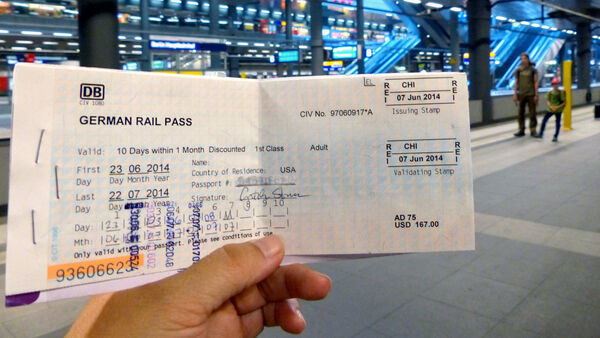Using Your Rail Pass


By Rick Steves
Rail passes are pretty straightforward but come with a lot of fine print (worth reading). It's important to understand the basics before your first day of train travel.
Activate your pass before your first use. In order for your rail pass to be valid for train travel, you must activate it by providing passport information and a travel start date. (Swiss passes and a few special offers come preactivated — if your pass is already designated for a specific travel period, skip this step.) Your pass comes with an issue date (usually the day you bought it) and in most cases must be activated within 11 months. For example, if the issue date is May 24, 2026, you must start the pass by April 23, 2027.
Activation is easy. Use Eurail's Rail Planner app to activate a digital pass by adding your pass to the app, then entering your activation date. (If you have a Swiss pass or BritRail pass, check for activation instructions when you receive your digital pass.) All train trips and nontrain bonuses (covered or discounted boats, buses, and high-mountain rides) must be started and finished within the valid life of your rail pass.
If you have a printed pass, you'll need to present it in person to a ticket agent at a European train station. The ticket agent (not you) writes in your passport number, and the first and last dates of your travel period, and stamps the activation box on the far right. (Don't write anything on your rail pass before it's been activated.)
Don't get caught with a pass that hasn't been activated: If you forget to do it before boarding, approach the conductor right away to activate it on board (you may be charged a fee of $5–30).
Plan ahead for groups. A family traveling with individual digital passes can, if they like, load them all onto one mobile device — but should think ahead, as the passes cannot later be transferred to a different device.
If you have a printed group pass (such as a pass that includes kids traveling for free with an adult), all group members must be present when the rail pass is activated at the train station. And since a group pass cannot be divided up, people named on one group pass can't use it simultaneously on different trains.
Enter trip details as you go, and (for flexipasses) keep an eye on your use of travel days. Before boarding any train with a digital pass, you'll need to select the specific journey you're taking in the Rail Planner app (which includes a train schedule search function). As you plan your train travel, you can save any trains you're thinking you might take to "My Trip" part of the app; once you've decided on the next train you'll use your pass for, choose that departure from the options you've saved, and tie that departure to your pass before boarding the train. The app generates a barcode that the ticket inspector will scan (not the same as a seat reservation).
With a continuous rail pass, you're otherwise good to go — you can travel as many days as you want during your pass's validated period.
But if you're using a flexipass, you'll want to be mindful of your use of travel days so that you're setting aside enough unused days for any long (or otherwise expensive) rides. With a flexipass, it's wise to pay out of pocket when the cost of a day's train travel is cheaper than the per-day cost of your pass. (If you don't want to waste a valuable rail-pass travel day on a short trip, don't link that ride to your pass in the app; see more tips on fine-tuning your rail pass).
On a paper flexipass, you'll see a string of blank boxes, one for each travel day available to you. Either just before or after boarding, fill in that day's date in ink in one of the blank boxes on your pass before the conductor reaches you. (Don't fill out any dates in advance, in case your plans change.) Most paper passes also require you to fill in your trip destinations on the foldout sheets of your pass cover.
A travel day is a calendar day, running from midnight to midnight. You can take as many trips as you like within each travel day. A nice bonus is that a direct overnight train uses only one travel day (not two) on a flexipass. Fill in your departure date as your travel day, and you're covered until you get off that train the next day.
Keep your phone charged and both your phone and passport in easy reach for pass inspection. After the train starts, the ticket inspector heads down the aisle, asking for tickets and passes, and checking that they are dated correctly. You may be asked to present your passport, too.
Keep a paper pass in your money belt. A printed rail pass is a valuable slip of paper, so guard it carefully. Even if you have travel insurance, a lost or stolen pass presents a logistical headache. Guard yours carefully. (If you lose a phone that contains a digital pass, you can replace it by filling out some paperwork — but you may have to pay out of pocket for tickets until the issue is resolved.)

